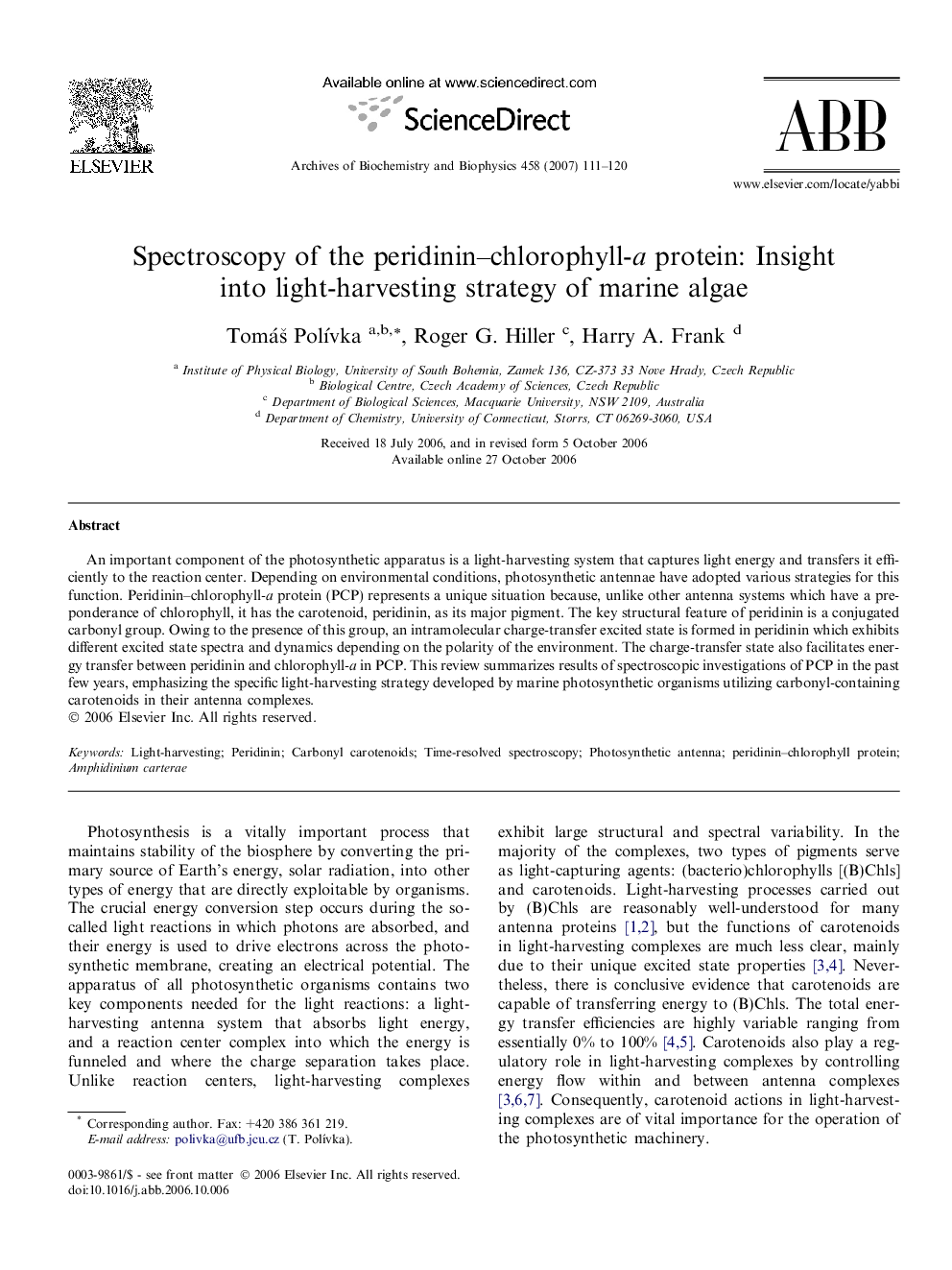| Article ID | Journal | Published Year | Pages | File Type |
|---|---|---|---|---|
| 1927193 | Archives of Biochemistry and Biophysics | 2007 | 10 Pages |
An important component of the photosynthetic apparatus is a light-harvesting system that captures light energy and transfers it efficiently to the reaction center. Depending on environmental conditions, photosynthetic antennae have adopted various strategies for this function. Peridinin–chlorophyll-a protein (PCP) represents a unique situation because, unlike other antenna systems which have a preponderance of chlorophyll, it has the carotenoid, peridinin, as its major pigment. The key structural feature of peridinin is a conjugated carbonyl group. Owing to the presence of this group, an intramolecular charge-transfer excited state is formed in peridinin which exhibits different excited state spectra and dynamics depending on the polarity of the environment. The charge-transfer state also facilitates energy transfer between peridinin and chlorophyll-a in PCP. This review summarizes results of spectroscopic investigations of PCP in the past few years, emphasizing the specific light-harvesting strategy developed by marine photosynthetic organisms utilizing carbonyl-containing carotenoids in their antenna complexes.
